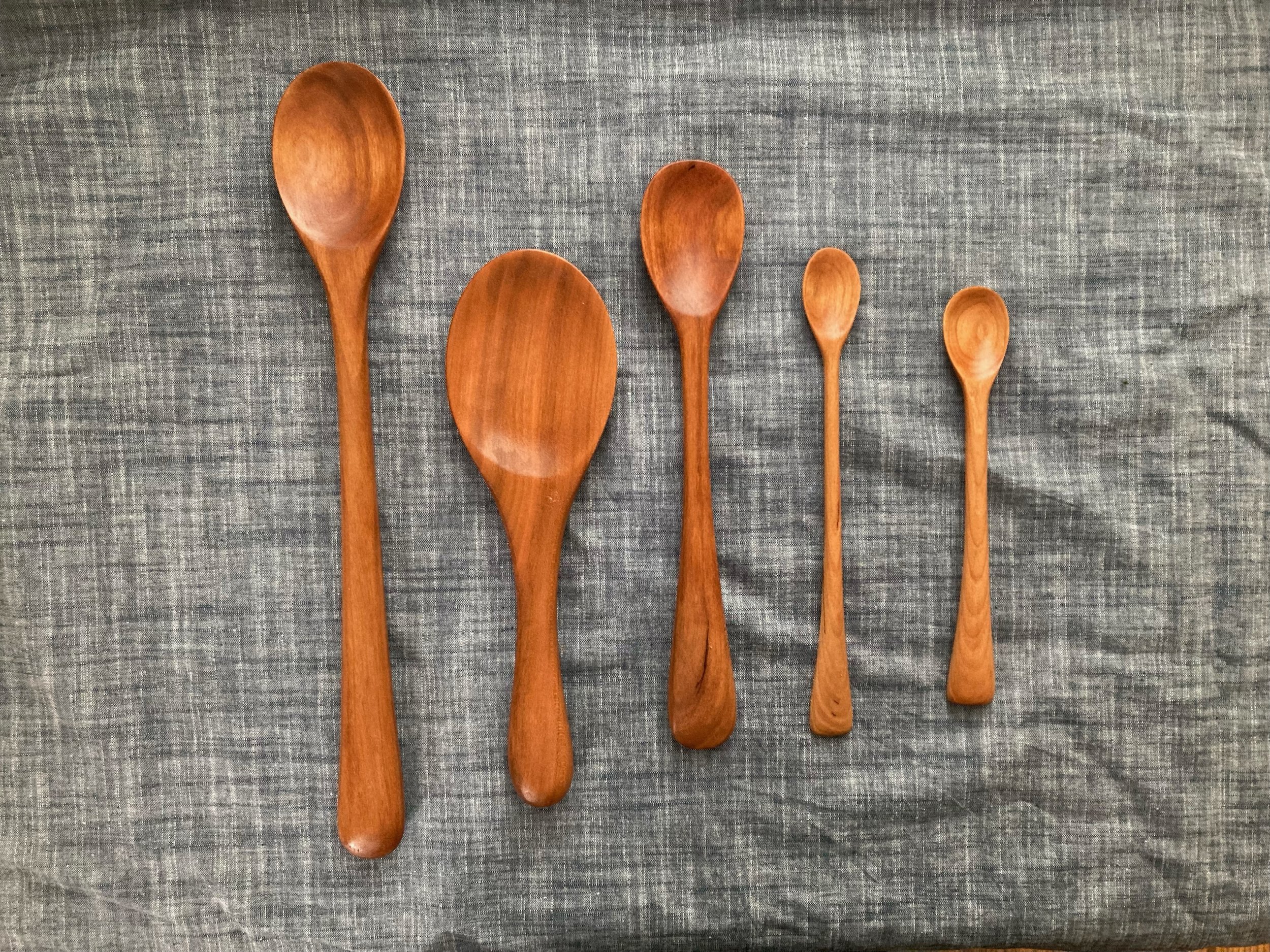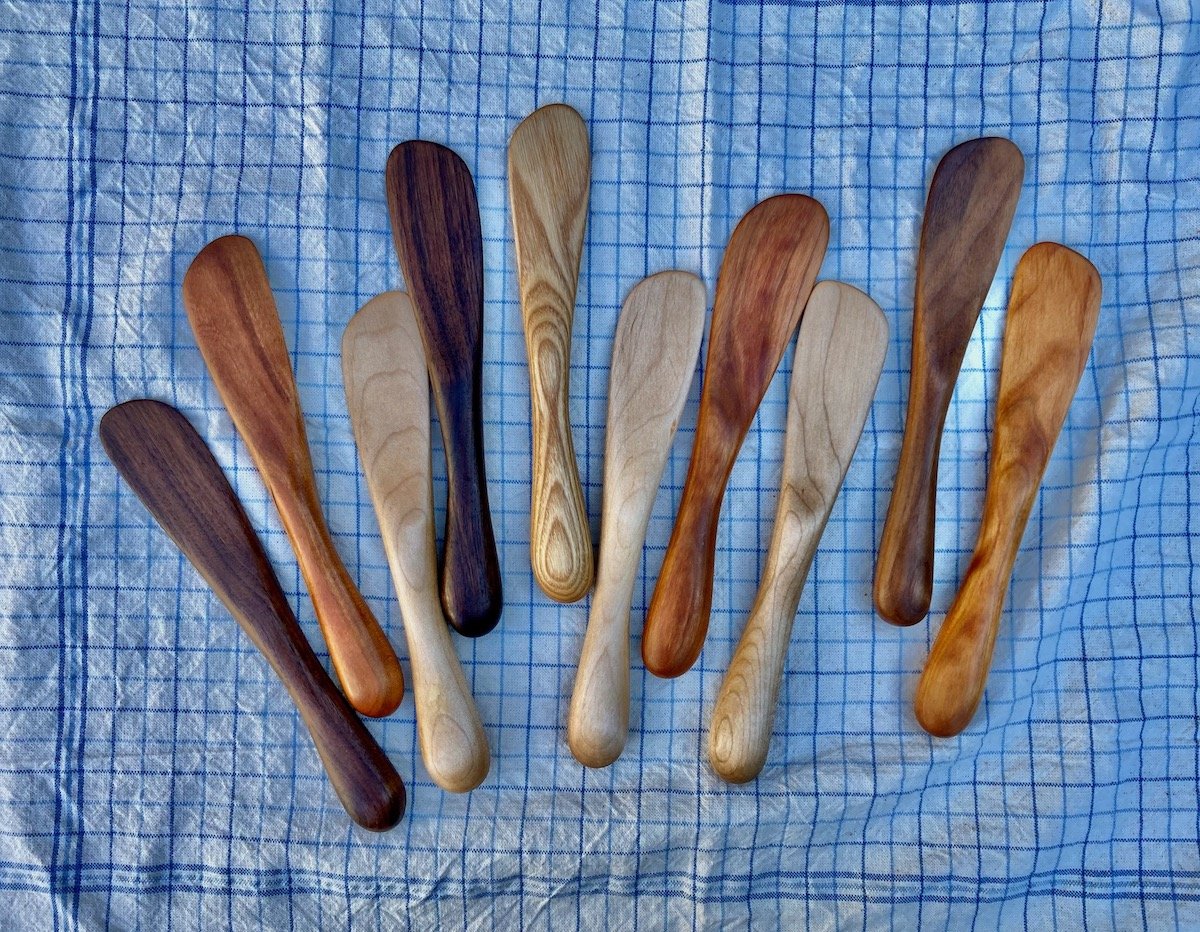Woodenware
I am a cook as well as a woodworker, and my goal is a tool that is beautiful to look at, comfortable in the hand, and useful for its intended task. Most of my designs came about because I didn’t like the tools I had at hand.
Spoons are traditionally carved from “green” wood; that is, wood freshly cut from the tree. If you have a freshly fallen tree, spoon carving is a great first step into woodworking. I started making woodenware out of a different frugal impulse, using scrap wood from furniture projects. I use a template for consistency, but each item is still hand-carved and therefore never quite the same as another. All my woodenware is sanded to high grit, wetted to raise the grain, then sanded lightly again; this means it won’t fuzz up as soon as you get it wet again. The finish is a generous coat of walnut oil followed by a homemade blend of walnut oil, beeswax, and carnauba wax.
Spoons
I am apt to experiment with spoons but settle on particular shapes for particular purposes. Shown here are a long (12-inch) stirring spoon, a rice paddle, a small stirring spoon, a swizzle spoon, and a sugar spoon, all in cherry. (I sometimes make the larger versions from maple or birch.) As always, I want these to be comfortable and functional, but in the case of the smaller ones, you’re also going to spend a good deal of time looking at the handle, so the back end needs to look good too.
Spatulas
A handle that nestles into the palm, a continuously curving profile, and a thin, flat edge for sautéeing or stir-frying. Because the design is asymmetrical, it can be made either right- or left-handed. I also make some with a curved edge for use in a wok.
Shown here are maple, ash, birch, cherry, and “caramelized” maple that’s been roasted in an oven to darken the color. All are good, durable woods for cooking utensils.
Spreaders
Put these out on a charcuterie board, or just class up your PBJ. Like the spatulas, they have a handle that nestles into the palm, a continuously curving profile, and a thin, flat blade.
Because these don’t take the abuse that cooking utensils do, I can use more porous woods like walnut and occasionally experiment with tropical or spalted varieties.



